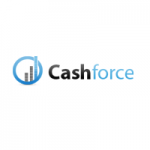| 1-6-2017 | Carlo de Meijer |
 Recently, I wrote that smaller blockchain consortia are needed. See my blog: Towards smaller and more focused blockchain consortia in 27 February 2017. The Hyperledger Project however may be the exception.
Recently, I wrote that smaller blockchain consortia are needed. See my blog: Towards smaller and more focused blockchain consortia in 27 February 2017. The Hyperledger Project however may be the exception.
Umbrella
Things look quite good for the Hyperledger Project, described as being an “umbrella” for the developer communities to work on creating open source blockchain and related technologies. The Project receives even more interest from different organizations and industries than ever before since the start of this year. Their collaborative effort seems also to be paying off as the Hyperledger Project recently announced the upcoming release of its first production-ready blockchain: Fabric. And Hyperledger feels “there are still plenty of use cases waiting to be explored”.
The Hyperledger Project
Hyperledger Project is a global collaborative cross-industry effort created to leverage the emerging blockchain and distributed ledger technology. The Hyperledger project, that announced its first members in February 2016, has grown to more than 120, making it the largest blockchain consortium in the world today. These span various industries including finance, banking, technology, manufacturing, healthcare, and the Internet of Things, among several others, with big names such as IBM, Cisco, Intel, JP Morgan, Deutsche Bank, Wells Fargo, The London Stock Exchange and Accenture. Its latest members reflect all of these different areas as well, indicating the future for blockchain looks even more viable than ever before.
Hyperledger aims to enable its member organizations to build robust, industry-specific applications, platforms and hardware systems based on blockchain technology to support their individual business transactions by creating an enterprise grade, open source distributed ledger framework and code base. The goal is to advance blockchain technology’s use in business by developing both a cross-industry open standard and an open-source development library that would allow businesses to build custom distributed ledger solutions.
New Members
The Hyperledger Project continued its strong momentum in 2017. Early March Hyperledger announced that eleven new members have joined the project. The latest members include: Bank of England, Bitmark, China Merchants Bank, Federal Reserve Bank of Boston, Initiative for CryptoCurrencies and Contracts (IC3), Kaiser Permanente, Kubique S.p.A., MadHive, Monax, OSCRE and RadarWin Cyber Technology. Hyperledger also announced American Express and Daimler AG as Premier members earlier this year.
“Growth and interest in Hyperledger remain high in 2017. We’re now at 122 members and seeing even more diverse organizations across industry sectors invest their energy and resources in understanding how blockchain technology can strengthen their own business processes. This new set of members’ combined backgrounds and experiences will be invaluable to the community, as we strive to increase production deployments through this year,” Brian Behlendorf, Executive Director of Hyperledger, stated.
Central banks
Interesting is that now also The Bank of England and the Federal Reserve Bank of Boston are among the new members of the Hyperledger blockchain initiative. They are the first institutions of their kind to become part of Hyperledger, underlining the big interest of these institutions in the new technology. The Bank of England has already pursued a range of applications, including the potential issuance of a digital currency.
Working Group China
The Hyperledger Project, has now also set up a working group in China, mirroring the strong interest in the country. Hyperledger revealed that over 25% of Hyperledger members are from mainland China.
As a result, Hyperledger announced the Technical Working Group China (TWG China) to “help bridge and foster a working relationship between the global Hyperledger community with local technical teams in China”. The TWG China aims to facilitate interactions between Hyperledger members around the world and contributors and technical users in mainland China as well as other regional countries including Taiwan and Hong Kong. The Working Group is also tasked to grow the Hyperledger developer community in China by encouraging technical contributions to the project. TWG China will host and organize meetups, hackathons, training sessions and other community efforts to help push blockchain education, research and development.
Hyperledger Fabric
After the Technical Steering Committee (TSC) of the Hyperledger Project announced the promotion of its “Fabric” blockchain project to an active phase, early March, its first production-ready distributed ledger code base, was released at the end of last month.
“Hyperledger’s TSC agreed to grant the project team’s request to advance the Fabric’s status from Incubation to Active. As a reminder, we see Hyperledger as an “umbrella” for software developer communities building open-source blockchain and related technologies. Fabric falls under that umbrella and is the first of the five Incubator projects to graduate.”
Hyperledger Fabric is thereby the first project to graduate incubation to production-ready status. It was originally proposed by Digital Asset Holdings (DAH) and IBM as a result of the first hackathon during which a merge between the IBM’s proposal and DAH’s proposal was started. A group of developers from 20 different member companies has been instrumental in making the Hyperledger Fabric a reality.
“In the year since the project entered incubation, the diversity of contributors on Fabric-related projects has grown from nearly no diversity of contributors to 45 percent of the contributors – representing individual contributors or developers working for one of nineteen other companies, be they exchanges, banks, large ISVs or start-ups.” Behlendorf
The goal of Hyperledger Fabric is to supplement large-scale commercial operations of companies with a robust network. It is designed to enable confidentiality, scalability and security in business environments through a modular architecture. It allows components, such as consensus and membership services, to be plug-and-play. Fabric, will be utilized as the base protocol and platform for its member banks and companies looking to use blockchain technology in building both decentralized and private applications.
Various industry leaders and large corporations have expressed their interest to implement Hyperledger Fabric once the codebase is deployed and released. Community members including the London Stock Exchange, DTCC, and Fujitsu, said “they will allocate their resources in maximizing the potential of Hyperledger Fabric by showcasing its use cases in a wide range of applications”.
Loyyal Platform as an example
IBM Blockchain partner Loyyal became the earliest tester of Fabric and joined the Hyperledger Project soon after. They have built a handful of prototypes on Fabric, from the first release of Marbles to the most recent Fabric Composer release. And now they are building out an enterprise-grade loyalty platform utilizing Fabric and its newest features. Loyyal is thereby using blockchain and smart contract technology to reduce loyalty program operation costs through efficiencies and increase revenues through targeting capabilities. The Loyyal platform, built on blockchain, is transforming the loyalty and rewards industry by offering interoperability, multi-branded coalitions, superior liability management and dynamic issuance and redemption options.
Other Hyperledger Projects
The Hyperledger Project has a special procedure to initiate blockchain projects. Any community member, contributor or partner company can propose blockchain projects or ideas to the Hyperledger Project and once approved, the development for the project will be pursued shortly after that. For Hyperledger projects like the Fabric to be deployed and introduced to the public, the foundation’s Technical Steering Committee (TSC) must unanimously agree that the codebase is production ready. The TSC thereby looks into the technical viability of the code, as well as its adaptability, flexibility, security and functionality to ensure that large-scale service providers will be able to utilize the blockchain technology without any boundaries.
Next to the Hyperledger Fabric, Hyperledger Project nowadays hosts multiple blockchain technologies. Hyperledger’s incubated projects include names like Blockchain Explorer, Cello, Iroha and Sawtooth Lake.
Hyperledger Blockchain Explorer is a “project in Incubation” that was proposed by IBM, Intel and DTCC to create a user-friendly web application for Hyperledger to view/query blocks, transactions and associated data, network information (such as name, status, list of nodes), chain codes/transaction families (view/invoke/deploy/query) and any other relevant information stored in the ledger.
A second project is Hyperledger Cello. This is a toolkit for deploying a Blockchain-as-a-Service, that reduces the effort required for creating, managing, and terminating blockchains. Hyperledger Cello aims to bring the on-demand “as-a-service” deployment model to the blockchain ecosystem, to provide a multi-tenant chain service efficiently and automatically, on top of various infrastructure, e.g., baremetal, virtual machine and more container platforms.
Hyperledger Iroha is also a “project in incubation” that was proposed by Japan’s Soramitsu, Hitachi, NTT Data, and Colu. Hyperledger Iroha is a distributed ledger project that is designed to be simple and easy to incorporate into infrastructural projects requiring distributed ledger technology.
Hyperledger Sawtooth Lake is a modular blockchain suite. It supports both permissioned and permissionless deployments. Sawtooth Lake includes a novel consensus algorithm, Proof of Elapsed Time (PoET), targeting large distributed validator populations with minimal resource consumption. Transaction business logic is decoupled from the consensus layer into so-called transaction families that “allow for restricted or unfettered semantics”. Hyperledger Sawtooth Lake is contained in a single repository.
Hyperledger Project appears more promising
“Success of ‘clubs’ or consortia depends on the set up and governance, the stated aim, and also on the degree of alignment of interest of member organizations”. ”Models such as the open-source collaborative Hyperledger effort ultimately appears more promising when the aim is mainstream, commercial adoption”.Milan Salaba, partner at Deloitte

Carlo de Meijer
Economist and researcher
 You might visit this site, being a treasury professional with years of experience in the field. However you could also be a student or a businessman wanting to know more details on the subject, or a reader in general, eager to learn something new. The ‘Treasury for non-treasurers’ series is for readers who want to understand what treasury is all about. From our expert Victor Macrae we received another article on risk management, of which we thought that it adds some extra aspects to the earlier article on riskmanagement.
You might visit this site, being a treasury professional with years of experience in the field. However you could also be a student or a businessman wanting to know more details on the subject, or a reader in general, eager to learn something new. The ‘Treasury for non-treasurers’ series is for readers who want to understand what treasury is all about. From our expert Victor Macrae we received another article on risk management, of which we thought that it adds some extra aspects to the earlier article on riskmanagement. 



 PSD2 is approaching soon, just a few months left. But do you know what exactly PSD2 is? And more important, what does PSD2 mean for your businesses? PSD2 enables relations of banks, to use (selected) third-party providers to manage their financial data. In the near future, you maybe will use social media to directly pay your bills, while still having your money safely placed in your own bank account(s).
PSD2 is approaching soon, just a few months left. But do you know what exactly PSD2 is? And more important, what does PSD2 mean for your businesses? PSD2 enables relations of banks, to use (selected) third-party providers to manage their financial data. In the near future, you maybe will use social media to directly pay your bills, while still having your money safely placed in your own bank account(s). Mark van de Griendt – Cash Management Expert at
Mark van de Griendt – Cash Management Expert at  In the
In the 


 In december 2016 hebben we deze vragen al eerder gesteld: Hoe interessant is beleggen in bedrijfsobligaties met een hoge rente? Hoe aantrekkelijk is deze financieringsoptie voor ondernemingen? In ons
In december 2016 hebben we deze vragen al eerder gesteld: Hoe interessant is beleggen in bedrijfsobligaties met een hoge rente? Hoe aantrekkelijk is deze financieringsoptie voor ondernemingen? In ons  Annette Gillhart – Community Manager treasuryXL
Annette Gillhart – Community Manager treasuryXL


 Proferus
Proferus Cashforce Cash forecasting 2.0
Cashforce Cash forecasting 2.0 Recently, I wrote that smaller blockchain consortia are needed. See my
Recently, I wrote that smaller blockchain consortia are needed. See my